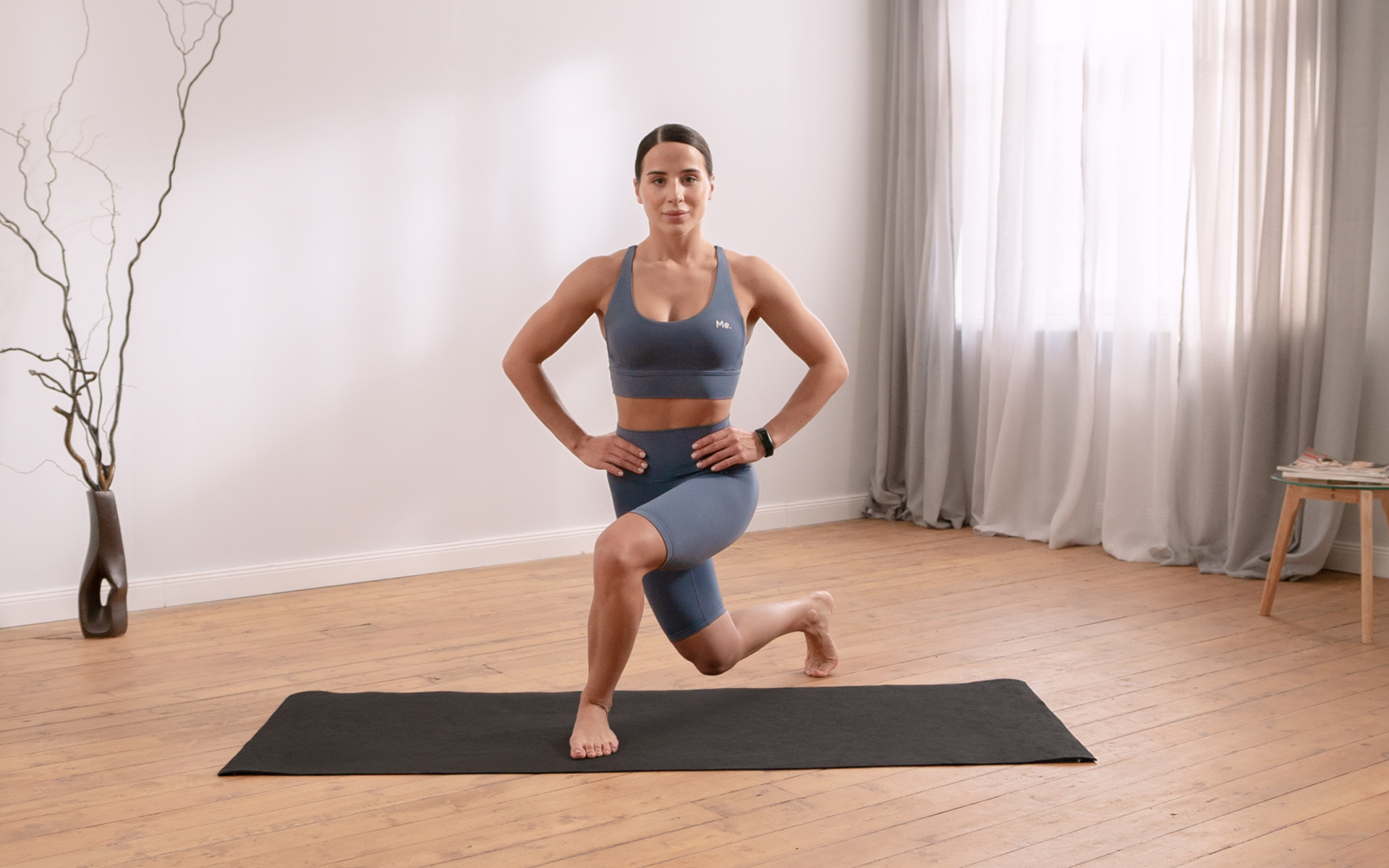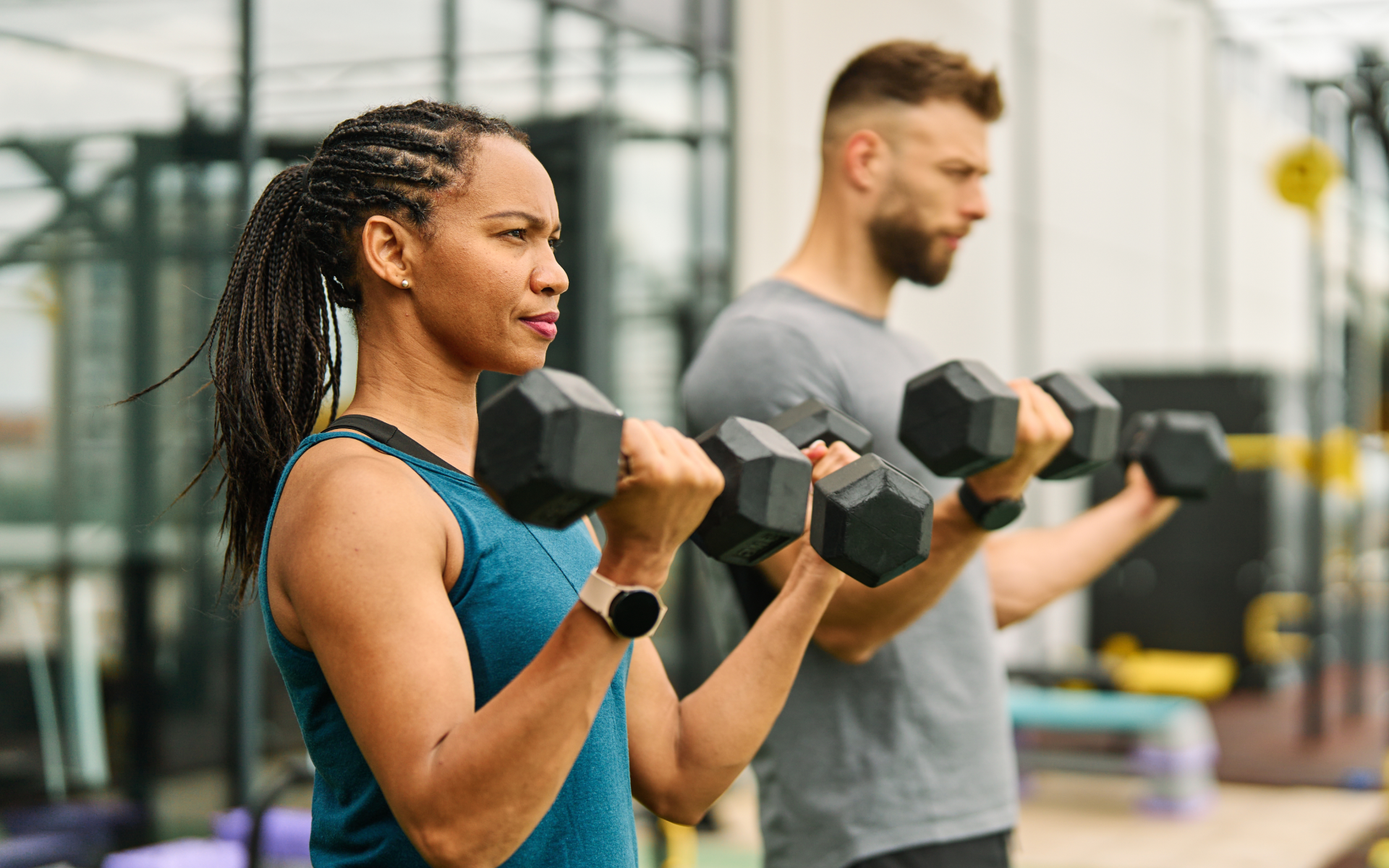Running is a weight-bearing exercise and can be done by anyone regardless of age, gender, and previous level of fitness. So if you’re new to exercise and wondering which ones are easiest for beginners, you might want to consider running for three miles a day. In addition to its many benefits, which we will discuss in this article, the simplicity of this exercise makes it worth including in your weight loss routine.
Get your personalized
meal plan!
Read on to know more about the benefits, risks, and how to get started with running for three miles a day if you’re just beginning.
What Happens In Your Body During A Run?
Running is a great exercise for your physical, mental, and spiritual well-being. It can improve your mood and help you to get rid of stress (8). But what happens to your body if you go for a run? As a matter of fact, many positive things take place during a run. These changes have been scientifically proven!
Here’s the list:
Fat Burns
Storing energy in muscle fibers takes oxygen, which means that you need more energy if you want to do something energetic. Muscles use fat as their primary source of this “energy currency”. To make it simple, when muscles don’t receive enough oxygen from blood (hypoxia), they start eating fat stored in the body. This process is called lipolysis, and it’s the main reason why you burn fat during a run (4).
Heart Rate Increases
Your heart rate can go up to 200 beats per minute during intense running (7). This number is much higher than the average resting heart rate, which makes you wonder how we manage to survive through such a run?
This happens because when oxygen levels in muscles drop, the nervous system sends a signal to the brain that tells the body it needs more oxygen. In response, respiratory and cardiac systems ramp up so they can deliver enough oxygenated blood to tissues.
Blood Pressure Drops
When you breathe heavily (hyperventilate), such as during hard exercise, CO2 levels get lower than usual. As a result, pH levels increase, causing vasodilation. The word “vasodilation” comes from two words: vaso, which means “vessel”, and -dilation, which means that “blood vessels expand”. Vasodilation is also known as the “pump prime” effect of exercise. It’s your body’s way to ensure that all tissues receive enough oxygenated blood (4).
Energy Levels Increase
If you’re exercising, you need more energy than usual. Energy comes in the form of chemicals called ATP (Adenosine triphosphate). You can compare it with batteries on your laptop or cell phone. When you run, some chemical reactions in muscles produce more ATP than usual, and this process is called anaerobic respiration (anaerobic = without air). This is one of the main reasons why people like runners can perform activities for a prolonged period (4).
Lactic Acid Levels Decrease
As we said earlier, vigorous exercise can lead to anaerobic respiration, which produces ATP (energy). When your muscles produce more ATP than they need, the rest is turned into lactic acid, and this usually happens when you do something strenuous such as running uphill or sprinting.
Lactic acid reduces pH levels in muscles and makes the environment less acidic, hence, other chemical reactions will function better. But at high concentrations, it’s toxic, so your body needs to get rid of it ASAP. This happens by transporting it from muscles to the liver where lactate becomes glucose again; the main source of energy is around here!
Read More: Does Running Build Muscle? The Truth About Anaerobic Exercise And Bodybuilding
What Are The Benefits Of Running 3 Miles A Day?
Running three miles a day for weight loss is great, but there are plenty of other reasons why you should take up this exercise.
Some of the most notable reasons are:
Strengthens Muscles
Running requires muscles to work efficiently in a variety of ranges of motion. Your muscles adapt to the demands you place on them during your training sessions by becoming more efficient at producing force.
Sustained running requires both “slow-twitch” (Type I) and “fast-twitch” (Type II) muscles to contract repetitively at various speeds while maintaining an aerobic metabolism throughout each contraction. Consequently, all types of skeletal muscle fibers become stronger due to the increased demand placed on them by running. Over time, this can dramatically increase muscular fitness, especially when combined with resistance training (3).
Running targets multiple muscle categories. The hip flexor muscles, for example, work to pull your leg forward and up toward your chest while running. The knee extensors (quadriceps) and plantar flexors contract concentrically to lift your body up and forward as you push off the ground with your toes. Yet other muscles such as the gluteals, core stabilizers, and abductors allow you to maintain good running form throughout the gait cycle.
Improves Cardiorespiratory Endurance
Like any challenging cardiovascular activity, running elevates the heart rate and breathing volume to a level that increases blood flow throughout the entire body. In other words, running causes an oxygen demand for the muscles to contract at a rate that exceeds the body’s ability to deliver oxygen to those same muscles (5).
Therefore, the demands of running cause the two primary adaptations in cardiorespiratory endurance (4):
- The heart becomes more efficient at delivering oxygen-rich blood to working muscles. This is referred to as a “stroke volume” increase because more blood is being pumped from the left ventricle with each contraction. As a result, fewer heartbeats are required to send the same amount of oxygenated blood throughout the body.
- The muscles become more efficient at using available oxygen and clearing acidity (waste products associated with energy metabolism). In other words, over time, your muscles learn how to do more with less; they have increased their capacity for work by becoming better “aerobic machines” capable of efficiently burning fat and carbs for energy without accumulating too much lactic acid.
Burns Calories
The number of calories burned by running is dependent on several factors, including your weight, height, age, gender, intensity level, etc. Running consistently, at least three miles a day, will ensure that you are burning enough calories to lose weight, even if you don’t change your eating habits.
Reduces Stress/Helps You Sleep Better
Studies have shown that 10 minutes of sustained aerobic activity (running) can significantly reduce stress levels and improve sleep quality. The endorphins released during exercise serve as neurotransmitters that help combat depression and anxiety while releasing stored tension, much like music or meditation (5).
Also, the more familiar you become with running in nature, the less likely you are to experience negative thoughts associated with isolation or self-doubt. Running is the perfect compliment to meditation because it trains both your body and mind to become more efficient at focusing on a single task.
Strengthens Bones
Your bones adapt to the stress of running by becoming stronger, denser, and overall more able to withstand impact forces (especially the spine). This process is called “training-induced bone remodeling” and researchers have found that many other types of high-impact training (such as jumping or wrestling) produce similar effects in the skeleton (1). The benefits are especially evident for women who should always be sure to include some type of resistance (weight-bearing) exercise like weight lifting throughout their lives.
Increases Metabolism
After you stop exercising, your muscles need time to recover and get back to their rested state. During this recovery period, your muscles use more energy (calories) than usual because they are still working hard (even at rest) to heal and rebuild themselves. This calorie burn continues long after you finish running and eventually returns to normal levels as the muscle tissue fully recovers.
Prevents Diseases
Regular aerobic exercise can reduce the risk of developing everything from type 2 diabetes, heart disease, depression, stroke, obesity, Alzheimer’s disease, and certain cancers (3).
If you’ve mustered up the courage to crush your weight loss goal, let Betterme take the sting out of this demanding process. Our app will help you restructure your habits, remold your life and crank up your fitness results!
How Much Weight Can You Lose Running 3 Miles A Day?
Running three miles a day burns approximately 300 calories per day depending on your body weight, gender, age, physical condition, etc. The number of calories burned during running can vary significantly depending on many factors, including speed/pace, bodyweight, location, distance, etc (2).
Although running is an excellent form of exercise, it ultimately doesn’t burn enough calories to effectively lose weight without making necessary dietary changes first. For example, a 130-pound woman running three miles per day at 8mph will burn approximately 300-400 calories per session, not nearly as much as some other exercises like HIIT-type circuits or strength training.
Changing eating habits (especially portion size) has a greater impact on weight loss than exercise alone. It takes 3500 extra calories (1 pound) to gain or lose 1 pound of fat mass, regardless of whether you are exercising or not. The key to weight loss is simply managing your energy balance, or the number of calories you are eating versus how many calories you are burning.
Are There Any Risks Of Running 3 Miles A Day?
Any form of exercise can be dangerous if not done right or with proper instruction. Running does put some stress on your joints and muscles, which increases the risk of injury if you don’t take special care to warm up correctly, stretch regularly, and use the proper running techniques (heavy shoes, overstriding, etc.).
The most common running-related injuries include (6):
- Iliotibial band syndrome (ITBS)
- Patellofemoral pain syndrome (PFPS)
- Plantar fasciitis
- Achilles tendonitis
- Calf strain
Running with proper form reduces your risk of injury and helps you run faster/farther without getting as tired. The poor running technique has been linked to increased impact forces that can lead to joint injuries or muscle soreness later on in your training session. In general, runners should keep the following concepts in mind:
- Stay relaxed throughout your body while maintaining a straight posture from head to toe. Try not to tense up too much during the stride but don’t flail about haphazardly either!
- Drive forward with each step by pushing off from the ground rather than leaning forward.
- Land lightly on your midfoot/forefoot – not your heels – to reduce impact force.
- Run at the proper pace for your fitness level, don’t try to run too fast or too slow.
- Increase your speed by gradually lengthening your stride, not leaning forward nor landing heavily on your heels.
Read More: Leg Workout For Running To Build Strength And Endurance
How To Start Running 3 Miles A Day?
Building a running habit can be challenging. However, with the right preparation and a consistent schedule, you should see great results from this habit.
Here’s how to build up to running three miles a day (5):
- Set a goal. Commit to running three miles in 1-2 months, otherwise, you’ll never complete it.
- Make a plan. Figure out the exact route you are going to take and how long it will take you to run that distance at your current pace, you can use an app or online calculator for this purpose.
- Get properly prepared. Invest in proper footwear, good running gear, etc. Also, be sure you are eating healthy so that when you start running three miles per day, your body can handle it without negative side effects or poor performance.
- Start small. Even if it’s just 30 minutes of walking five days/week until your body is ready for higher levels of activity to avoid injury and burnout.
- Have a “goal buddy”. Ideally, this is someone who has run three miles per day before and has done it consistently for at least a month or two. You can support each other by motivating one another, being held accountable, sharing your progress, etc.
Reasons why BetterMe is a safe bet: a wide range of calorie-blasting workouts, finger-licking recipes, 24/7 support, challenges that’ll keep you on your best game, and that just scratches the surface! Start using our app and watch the magic happen.
Tips For Getting The Most Out Of Running 3 Miles A Day
To get the most out of your running routine, consider these tips:
Fuel Up Properly
Make sure you are eating enough calories daily (especially if weight loss is one of your goals), as running can result in significant calorie burn during activity and even more after exercise.
Practice Proper Form
Running with poor form can lead to serious injuries or just make the activity more painful (6). You can avoid this by pushing off with your toes, driving your knee forward at the same time, using good breathing techniques while running, etc.
Keep Track Of Your Performance
Consider using a website/app that tracks training milestones and performance statistics. You may even want to consider a heart rate monitor as well, which can provide valuable insight into your fitness level (especially if you are interested in losing weight or improving body composition).
Get Good Sleep
Getting enough sleep (8+ hours per day) is CRITICAL for muscle recovery after exercise, boosting metabolism, reducing stress & anxiety, etc.
The Bottom Line
Running is a great form of exercise, but it may not be enough to burn calories for weight loss alone. This can be achieved when combined with proper diet modifications (i.e., reduce calorie intake, cut out sugar/carbohydrates). It’s important to set realistic goals and to create the right habits to integrate running into your lifestyle.
DISCLAIMER:
This article is intended for general informational purposes only and does not address individual circumstances. It is not a substitute for professional advice or help and should not be relied on to make decisions of any kind. Any action you take upon the information presented in this article is strictly at your own risk and responsibility!
SOURCES:
- Effects of Resistance Exercise on Bone Health (2018, nih.gov)
- Energy expenditure comparison between walking and running in average fitness individuals (2012, nih.gov)
- Exercise-induced Muscle Damage and Running Economy in Humans (2013, nih.gov)
- Greater Weight Loss from Running than Walking during 6.2-yr Prospective Follow-up (2014, nih.gov)
- Health Benefits of Running (2021, webmd.com)
- Injuries in Runners; A Systematic Review on Risk Factors and Sex Differences (2015, nih.gov)
- Target Heart Rates Chart (2021, heart.org)
- The Truth Behind ‘Runner’s High’ and Other Mental Benefits of Running (n.d., hopkinsmedicine.org)















